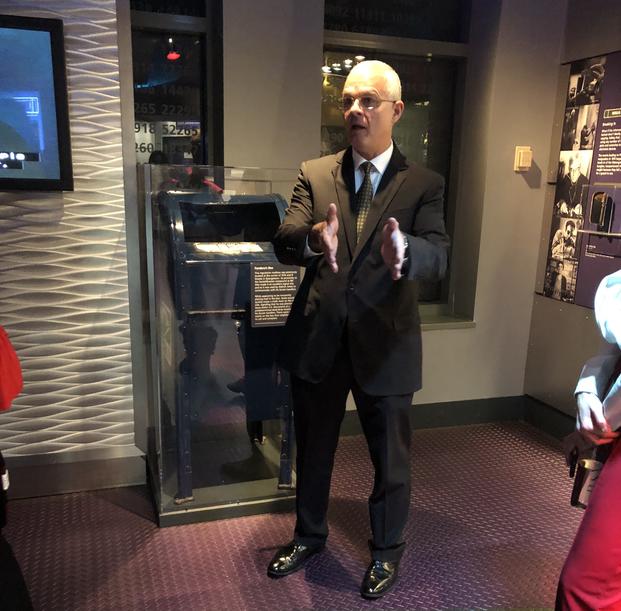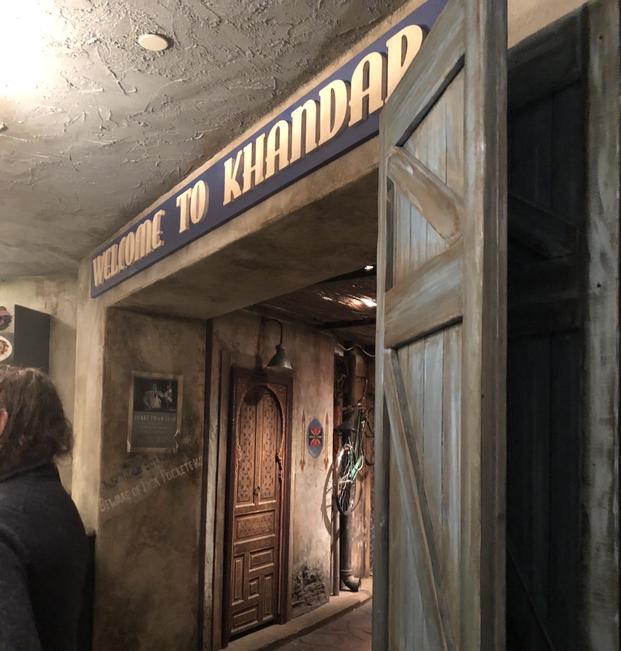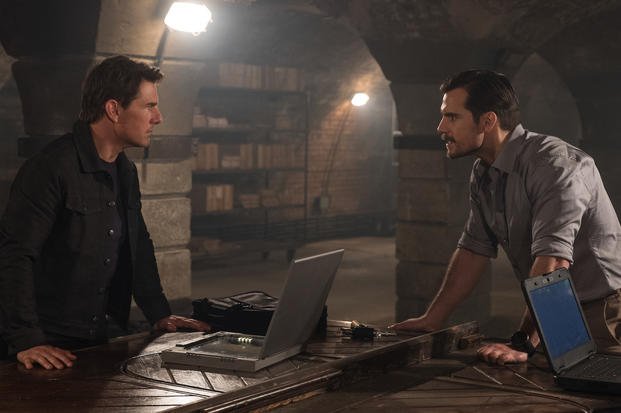Tom Cruise doesn't believe in half measures, and the attention to detail he's brought to "Mission Impossible" over the last two decades is nothing short of astounding.
Example 1: Aerial coordinator Marc Wolff gave us some details about how the team filmed the breathtaking helicopter climax of "Mission: Impossible - Fallout" (out now on 4K, Blu-ray, DVD and Digital).
Example 2: Paramount Pictures held a promotional event for the home video release last month at the International Spy Museum in Washington, D.C. Members of the studio team let on that they'd visited Cruise on the set of "Top Gun: Maverick" to go over details as they planned the event. While Tom is a producer on "Fallout," that's a level of commitment.
The timing was excellent. The Spy Museum is ending a 16 1/2-year run at 800 F St. NW on Dec. 31, and I was able to make one last visit before the museum moves to a new, larger building at L'Enfant Plaza in May 2019.
The "Mission: Impossible" movies are all about daring stunts, colorful villains and races against the clock, but as the museum points out through its displays, real intelligence work is more about patience, endurance and the subtle changes in pattern.
Spy Museum Director Christopher Costa retired from the U.S. Army as a colonel and enjoyed a storied career in military intelligence, very little of which he's allowed to explain in detail.

We were fortunate that Costa gave our group a personal tour, and took special interest in showing us the actual U.S. Postal Service mailbox used by Soviet spy and former Central Intelligence Agency officer Aldrich Ames to signal his Russian handlers. Formerly located at the corner of 37th and R Sts. NW in Washington, it now enjoys a prominent place in the museum -- the kind of obvious, nondescript, everyday item that's crucial to success in actual spycraft.
The museum currently is running an entertaining exhibit on James Bond villains, but Costa says the facility will move away from exhibits that feature spies from film and television at its new location, instead focusing more on the real tradecraft of spying.
Retired spies have run the museum since its inception and there's a true respect for the art of spying here, even if some of those spies have been enemies to the United States. It's one of the reasons it's called the International Spy Museum. China's been in the state-sponsored espionage game for thousands of years, and the Russians are coming up on a millennium of spycraft themselves. We Americans are youngsters in the spy game. George Washington may have depended on spies during the Revolutionary War, but the U.S. didn't really go all international intrigue until World War II.
Unlike many D.C. museums, the Spy Museum has no affiliation with the federal government, and, as a private non-profit, charges an admission fee to keep the organization running. The museum offers a military discount and a $2 discount is available if you buy your tickets in advance online.

For an additional fee, the museum offers an interactive experience called Operation Spy, in which groups are tasked with locating a nuclear device in the fictional country of Khandar. During my experience, our team conducted the mission, having to disable security systems, elude enemy operatives, escape in a truck and be extracted by helicopter from a rooftop.
The highlight of the promotional event was the chance to speak with CIA veterans Peter Earnest and Jonna Mendez. Earnest is the founding executive emeritus of the International Spy Museum, a position he held following a 36-year career at the agency, including more than twenty years in the Clandestine Service. Mendez is the former chief of disguise in the CIA's Office of Technical Service and served 27 years at the agency.
In his final posting, Earnest served as the CIA's principal spokesman and advocated for greater openness with the media and the public. He has continued that mission in his work with the museum. "Chief of disguise" may just be the greatest job title ever, and Mendez's expertise on the subject is definitely of interest to any "Mission: Impossible" fans.
Actor Kristoffer Joner, who played the scientist Nils Debruuk in "Fallout," and CNN anchor Wolf Blitzer also were on hand at the event. It's impossible to get into any detail with Blitzer without revealing a major plot point, so this interview was a tough one.
"Mission: Impossible - Fallout" stands alongside "Black Panther" as the best of 2018's mainstream movies. Writer/director Christopher McQuarrie wrote the screenplay for 2020's "Top Gun: Maverick," and is working closely with Cruise and director Joseph Kosinski ("Oblivion," "Only the Brave") on the movie. Cruise obviously understands that the "Mission" series and "Top Gun" are his most important legacy, and the team he's put together for the return of Maverick should give us all hope that we'll once again, we'll get a chance to feel the need for speed.






